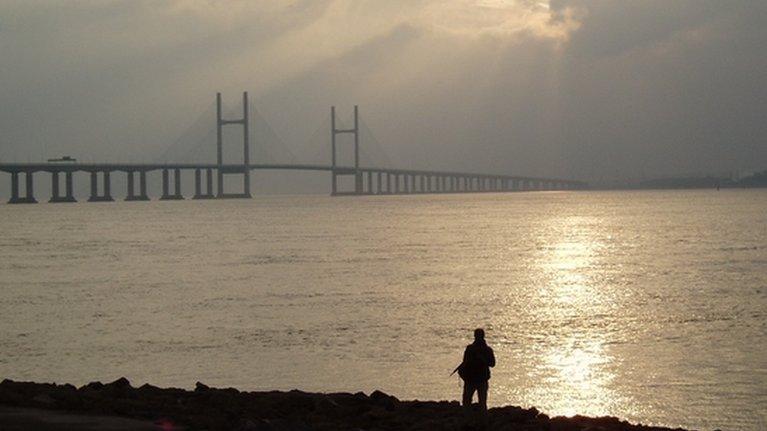Second Severn Crossing marks 20 years since official opening
- Published
The Second Severn Crossing, the bridge that links England and South East Wales over the River Severn, is marking its 20th anniversary.
The 5,128m (16,824ft) long structure took four years to build, cost £330m and was officially opened by Prince Charles on 5 June 1996.

The Second Severn Crossing was inaugurated on 5 June 1996 by Prince Charles to increase the traffic capacity of the original Severn Bridge built in 1966
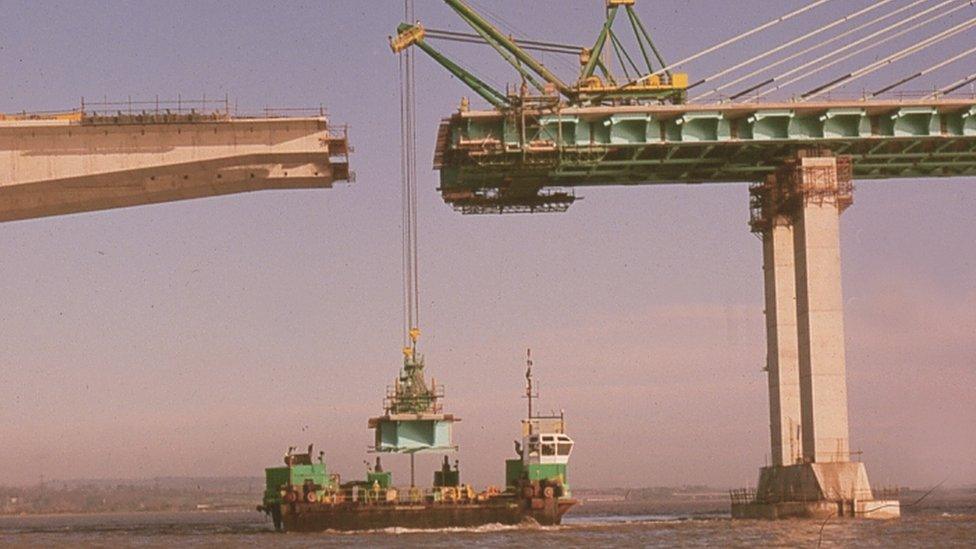
Parts of the bridge were constructed onshore and then shifted by a large tracked vehicle - similar to those used to move space shuttles - onto a barge
Work began on the M4 crossing in 1992 after the original Severn Bridge, built three decades earlier, struggled to cope with the volume of traffic.
Due to erratic currents and a huge tidal range, many of the bridge's 2,000-tonne pier foundations had to be constructed onshore.
They were then shifted onto a large tracked vehicle - similar to those used to move space shuttles, loaded onto a barge and floated out on the high tide to the appropriate sites.
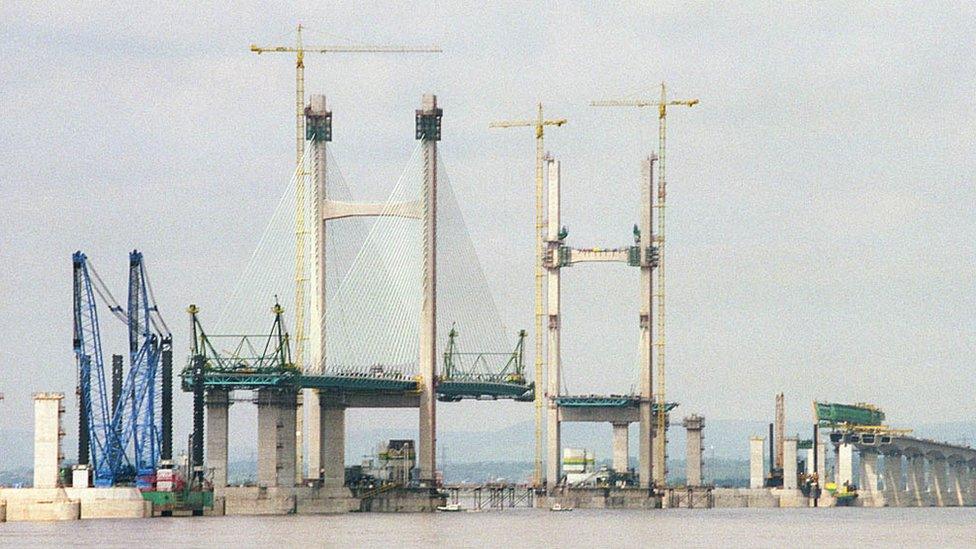
The bridge decking is made up of of 3.6m (11.8ft) cast sections which weigh about 200 tonnes each

The 37 bridge pier foundations on the approaches to the bridge, consist of 2,000 tonne open concrete caissons which were founded on the rock of the estuary bed
The crossing, which stretches between South Gloucestershire in England and Monmouthshire in Wales, now carries more traffic than its forerunner the Severn Bridge, which is still in use.
Sir John Armitt, who project managed the bridge's construction, said he still gets a thrill when he drives over it.
"Building a bridge like this is especially rewarding as you can see instantaneously the benefits it delivers," he said.
"One hundred years ago the only way to cross the lower Severn Estuary was by ferry. Today 80,000 vehicles safely cross the lower Severn every day."
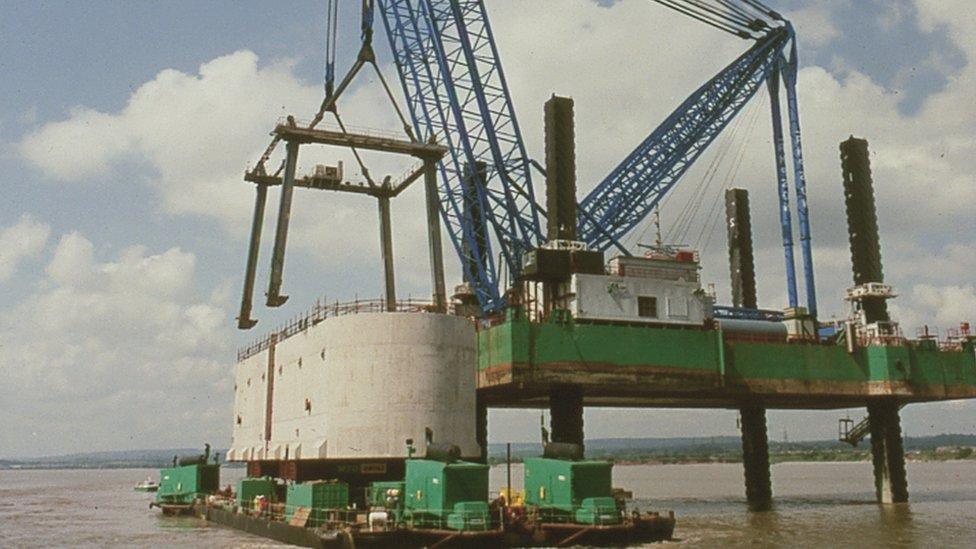
The crossing cost £330m, compared with the £8m of its predecessor three decades earlier

The Second Crossing made improvements to the design of the first bridge, especially in the way in which it coped with winds hitting the side
- Published11 February 2016
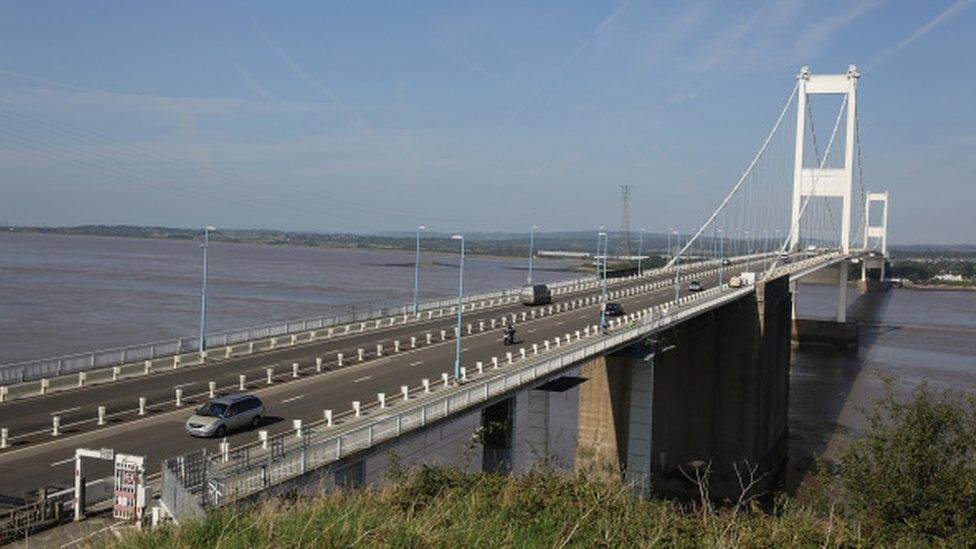
- Published1 March 2014
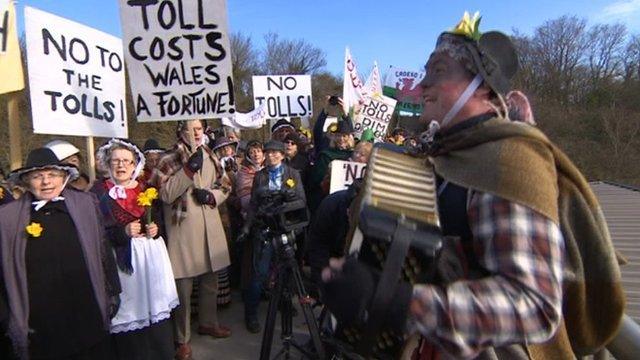
- Published5 November 2012
